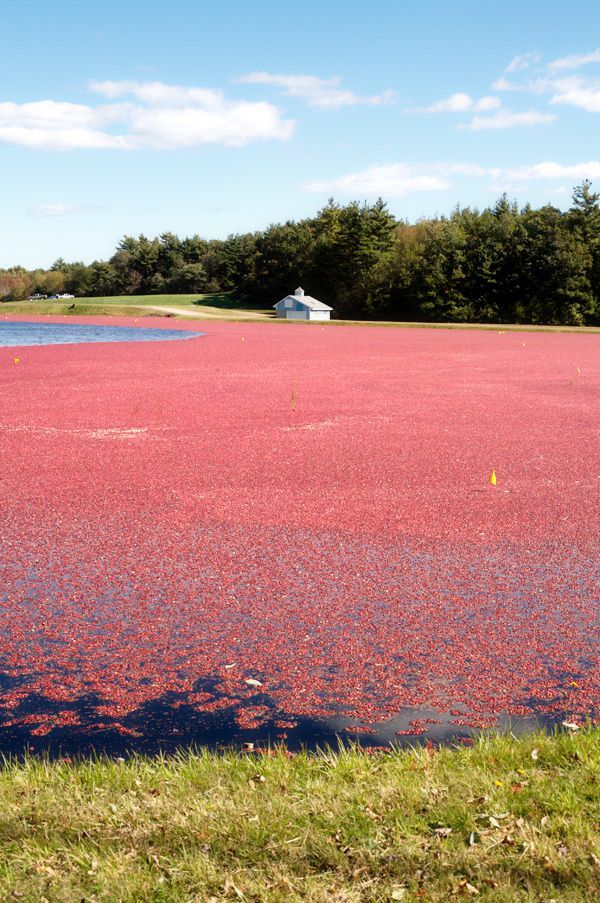|
|
Harvesting Cranberries In England, United Kingdom
|
• History
In 1550, James White Norwood made reference to Indians using cranberries. In James Rosier's book "The Land of Virginia" there is an account of Europeans coming ashore and being met with Indians bearing bark cups full of cranberries. In Plymouth, Massachusetts, there is a 1633 account of the husband of Mary Ring auctioning her cranberry-dyed petticoat for 16 shillings. In 1640's "Key Into the Language" Roger Williams described cranberries, referring to them as "bearberries" because bears ate them. In 1648, preacher John Elliott was quoted in Thomas Shepherd's book "Clear Sunshine of the Gospel" with an account of the difficulties the Pilgrims were having in using the Indians to harvest cranberries as they preferred to hunt and fish. In 1663, the Pilgrim cookbook appears with a recipe for cranberry sauce. In 1667, New Englanders sent to King Charles 10 barrels of cranberries, 3 barrels of codfish and some Indian corn as a means of appeasement for his anger over their local coining of the Pine Tree shilling. In 1669, Captain Richard Cobb had a banquet in his house (to celebrate both his marriage to Mary Gorham and his election to the Convention of Assistance), serving wild turkey with sauce made from wild cranberries. In the 1672 book "New England Rarities Discovered" author John Josselyn described cranberries, writing:
"Sauce for the Pilgrims, cranberry or bearberry, is a small trayling plant that grows in salt marshes that are overgrown with moss. The berries are of a pale yellow color, afterwards red, as big as a cherry, some perfectly round, others oval, all of them hollow with sower (sic) astringent taste; they are ripe in August and September. They are excellent against the Scurvy. They are also good to allay the fervor of hoof diseases. The Indians and English use them mush, boyling (sic) them with sugar for sauce to eat with their meat; and it is a delicate sauce, especially with roasted mutton. Some make tarts with them as with gooseberries."
"The Compleat Cook's Guide" published in 1683 made reference to cranberry juice. In 1703, cranberries were served at the Harvard University commencement dinner. In 1787, James Madison wrote Thomas Jefferson in France for background information on constitutional government to use at the Constitutional Convention. Jefferson sent back a number of books on the subject and in return asked for a gift of apples, pecans and cranberries. William Aiton,a Scottish botanist, included an entry for the cranberry in volume II of his 1789 work, Hortus Kewensis. He notes that Vaccinium macrocarpon (American cranberry) was cultivated by James Gordon in 1760. In 1796, cranberries were served at the first celebration of the landing of the Pilgrims, and Amelia Simmons (an American orphan) wrote a book entitled "American Cookery" which contained a recipe for cranberry tarts. In 1816, Henry Hall first commercially grew cranberries in East Dennis, Massachusetts on Cape Cod. In 1843, Eli Howes planted his own crop of cranberries on Cape Cod, using the "Howes" variety. In 1847, Cyrus Cahoon planted a crop of "Early Black" variety near Pleasant Lake, Harwich, Massachusetts. In 1860, Edward Watson, a friend of Henry David Thoreau wrote a poem called "The Cranberry Tart."
|
|









